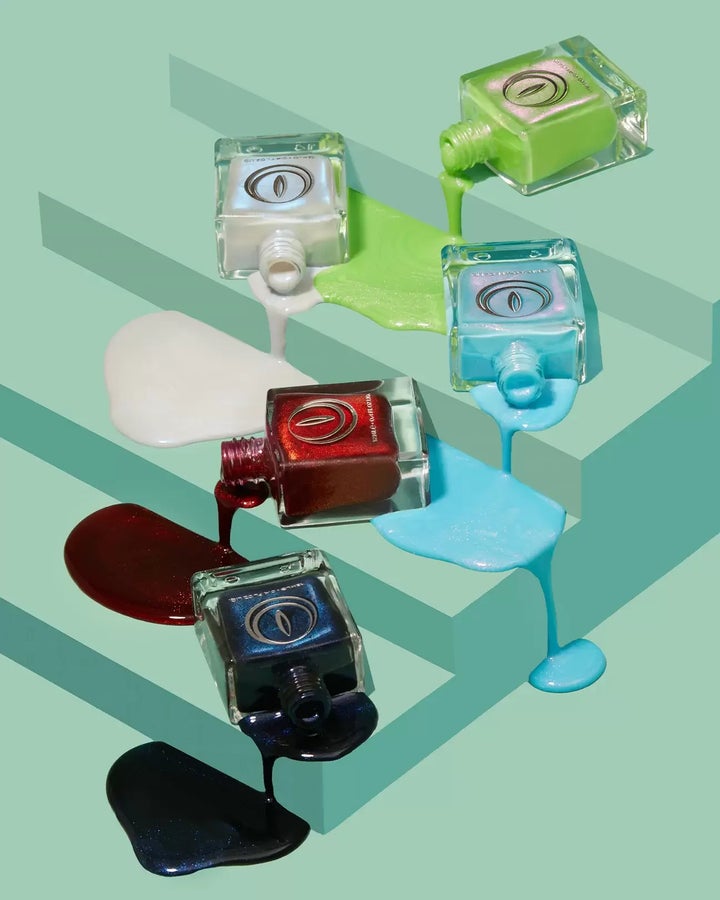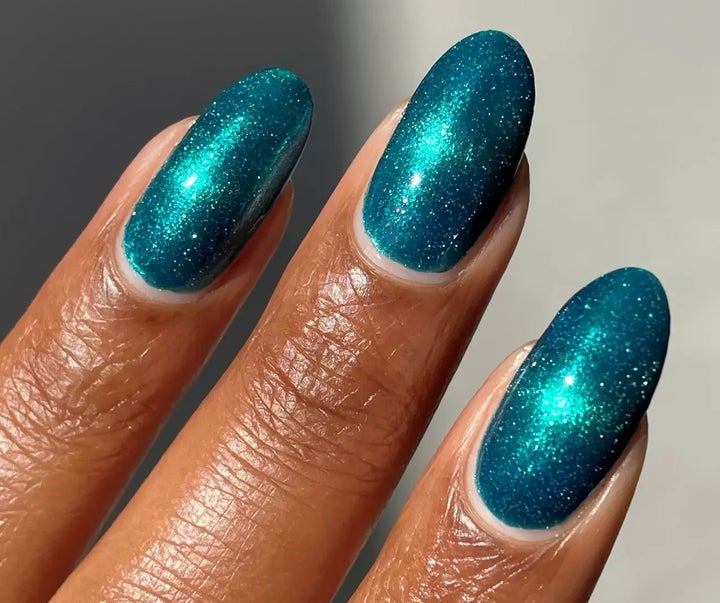
Beauty trends come and go, but nail polish is here to stay. While that may seem like a bold statement, nail polish has been around for 5,000 years and has only continued to grow in popularity. Today, the nail polish industry is estimated to have a market value of $15bn (£12.5bn), which is predicted to grow over the next decade by $10bn.
Whether you enjoy getting your nails done at the salon or painting them at home, you are likely no stranger to the top nail polish brands like Essie, OPI, and Sally Hansen. But now, a new market is emerging: indie polish brands.
We talked to Michelle Lin, the founder and CEO of Mooncat, to learn what it’s like to launch and run a successful indie polish brand.
Before starting Live Love Polish about 10 years ago (rebranded as Mooncat last year), Lin didn’t have a background in cosmetics or product development. Her background in nail polish was pretty similar to that of most of us: “I always painted my nails and spent a lot of time shopping at drugstores for nail polish, but I never felt like I could find exactly what I was looking for.”
This was around the same time Amazon became the behemoth in online shopping that we know now. Lin turned her nail polish search to the internet: “You could order a pillow online, and it shows up on your doorstep in two days, which is cool. But when it came to shopping for beauty products and things like nail polish, the online experience was completely nonexistent.”
“It’s a pretty chaotic process. And we like to keep it that way.”
Lin, a struggling college student at the time, decided to fill that void. “I’m proud to say that we were one of the first direct-to-consumer brands in the nail space that brought the nail experience to life. We focused on imagery, product quality and making stuff that was unique.”
The vibrant shades, sparkly glitters and funky collections she creates aren’t your typical store-bought polishes, and it all started with online research. Learning the ins and outs of creating a polish on YouTube, Lin wanted to provide a quality product that was safe, cruelty-free and vegan. Beyond researching, creating these one-of-a-kind colors wasn’t something Lin could do alone.
“I had a team to support me on this,” Lin says. To help her create the product she was envisioning, she brought in chemists and regulatory experts.
A chemist is the key to creating a long-lasting nail polish formula that doesn’t chip and glides on smoothly. Mooncat uses a chemist to test the quality, thickness, lasting power and vibrancy of the polish. Whatever problem arises, the chemist looks for a solution to get the desired consistency and colour. Regulatory experts, on the other hand, ensure all the ingredients and formulas are safe for consumer use and follow Mooncat’s standards.
But before any of these tests can be done, Lin has to come up with a nail polish colour.
Mooncat mainly releases nail polish collections, like its recent This Is Surrealism set. Lin, an art history major, has always loved the surrealist painter Magritte. “Everything he does is just so incredible. I envisioned bringing those colours to life from surrealist paintings,” she says.

And that’s how the surrealism collection was born. Other times a single colour may inspire a polish set, which is exactly what happened with the recent collection Expedition: Atlantis.
“Our product designer made this blue reflective magnetic colour. The moment I saw it, I was like: This is Atlantis,” Lin says. The deep sparkly blue sparked other ideas. “I feel like we’re diving underwater or I’m like a pirate looking for treasure. Let’s bring this to life.”
The result was four additional colours in the Atlantis collection, all inspired by the story created from the blue polish. But that’s not the end of the process. Once the collection is nailed down, it’s time to name each individual polish.
Working with a copywriter, Lin names her polishes in a few ways. She may ask for a long list of ideas, or sometimes the colour inspires its name instantly. That’s what happened with the blue polish mentioned above.
“With the Atlantis collection blue, I knew this has to be something related to the sea. So we named the Poseidon Prize to kind of be on theme for that Atlantis collection,” Lin says.
Once the collection is complete, it’s time to market the product. For Mooncat, the majority of that is done online.
“The reality of this generation is that the new business owner has to both be a business owner and a content creator.”
“You have to prioritize social media. There’s no growth for businesses and brands nowadays without social media,” Lin says. “The reality of this generation is that the new business owner has to both be a business owner and a content creator.”
For those interested in getting into the nail polish industry, Lin explained that what she looks for in a Mooncat employee is likely not what the rest of the market seeks. “We’re looking for things like out-of-the-box thinking, creativity and can you get a little bit wild? I don’t necessarily think those things resonate much with some brands out there,” she adds.
However, she does have advice for those wanting to start their own business, nail polish or otherwise. The first step, she says, is research, “There’s a lot of stuff out there on YouTube that can teach you how to make a product, whether it’s nail polish, jewellery or soaps.” Once you get more serious, she recommends bringing in experts and having a strong social media presence to get your name out there.
For her brand, the steps from idea to the final concept can get a bit wild, but that’s how she wants it.
“It’s a pretty chaotic process. And we like to keep it that way,” she explains. “I think too many restrictions and too much structure when it comes to creativity can hold you back from having fun. We try to have a lot of fun.”